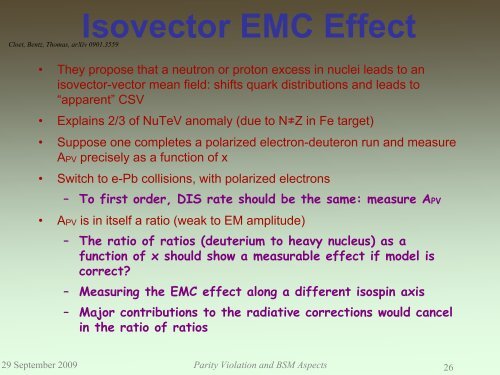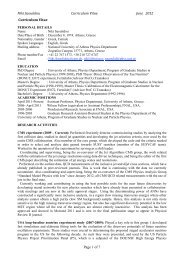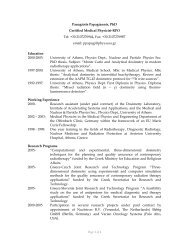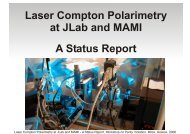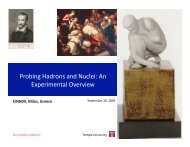Parity Violation and BSM Aspects
Parity Violation and BSM Aspects
Parity Violation and BSM Aspects
You also want an ePaper? Increase the reach of your titles
YUMPU automatically turns print PDFs into web optimized ePapers that Google loves.
Isovector EMC Effect<br />
Cloet, Bentz, Thomas, arXiv 0901.3559<br />
• They propose that a neutron or proton excess in nuclei leads to an<br />
isovector-vector mean field: shifts quark distributions <strong>and</strong> leads to<br />
“apparent” CSV<br />
• Explains 2/3 of NuTeV anomaly (due to N≠Z in Fe target)<br />
• Suppose one completes a polarized electron-deuteron run <strong>and</strong> measure<br />
APV precisely as a function of x<br />
• Switch to e-Pb collisions, with polarized electrons<br />
– To first order, DIS rate should be the same: measure APV<br />
• APV is in itself a ratio (weak to EM amplitude)<br />
– The ratio of ratios (deuterium to heavy nucleus) as a<br />
function of x should show a measurable effect if model is<br />
correct?<br />
– Measuring the EMC effect along a different isospin axis<br />
– Major contributions to the radiative corrections would cancel<br />
in the ratio of ratios<br />
29 September 2009 <strong>Parity</strong> <strong>Violation</strong> <strong>and</strong> <strong>BSM</strong> <strong>Aspects</strong><br />
26


